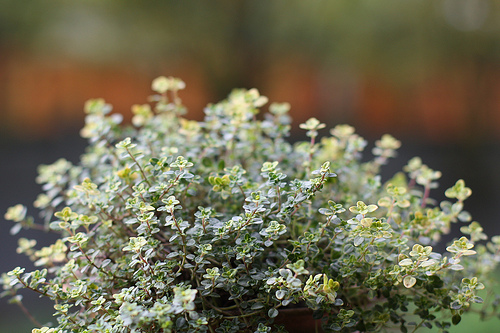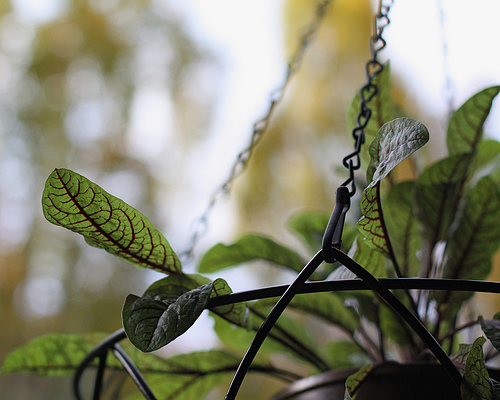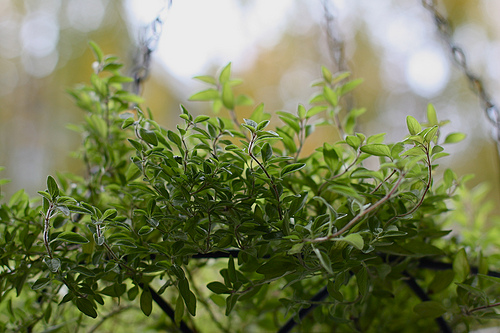Last Saturday morning, just before 8 am, I was beyond ready, eager and impatient to be on the road east to brighter skies, long walks & photo ops along Hope River Road and on Little Mountain, and, at the end of the day, a warm, tasty meal of homemade soup and pumpkin seed bread. But before leaving, I chose to exercise self-discipline (a weak muscle for me) and spent a good hour -- with the emphasis on good so it was really no hardship -- tidying and tending the balcony's plants, tools and surfaces.
After I'd finished clearing the dried leaves from the Japanese maples and sweeping the deck, sunlight began streaming through gaps between the clouds. Because I consider it a "sin" to waste a moment of good light in October, I dropped the broom and secateurs and picked up my camera so I could preserve the images of herbs that have delighted and nourished my senses through late spring, summer and now autumn.

Thymus 'Doone Valley' (Doone Valley Thyme)

Rumex sanguineus var. sanguineus (Red-veined Sorrel, Bloody Dock)

Origanum vulgare 'Aureum' (Golden Oregano)
This post contains an experience-based recommendation -- and perhaps some evidence -- for including these three "5-star" plants in the fall kitchen garden.
Each plant gets stars for: #1) attractive appearance, #2) container suitability, #3) ease of care, and #4) culinary potential.
Each plant gets a fifth and one or more bonus stars for these features:
Doone Valley Thyme -- scent.
Red-veined Sorrel -- other common name: Bloody Dock!
Oregano -- exuberant, lush growth habit: it spreads, climbs and trails to fill and spill over a container.
Most of all, my eyes enjoy all three along the balcony's railing where they look good in all levels and qualities of light, even today's overcast grey.
Growing tips from some favourite resources
It's about thyme - from You Grow Girl
Origanum vulgare 'Aureum' | Golden Oregano - an excerpt from Designing an Herb Garden
The Macabre Beauty of Bloody Dock - from Paghat's Garden
Note: I eventually made it to my destination but that's the subject of the next post.
 Thursday, December 2, 2010
Thursday, December 2, 2010  On these first days of December I'm looking back on the past 11 months of balcony gardening. For a start, I've selected one plant portrait for each month. During the next couple of weeks, I'll write some posts about my balcony-tested favourites -- in case you'd like to try something new in your 2011 garden.
On these first days of December I'm looking back on the past 11 months of balcony gardening. For a start, I've selected one plant portrait for each month. During the next couple of weeks, I'll write some posts about my balcony-tested favourites -- in case you'd like to try something new in your 2011 garden.






